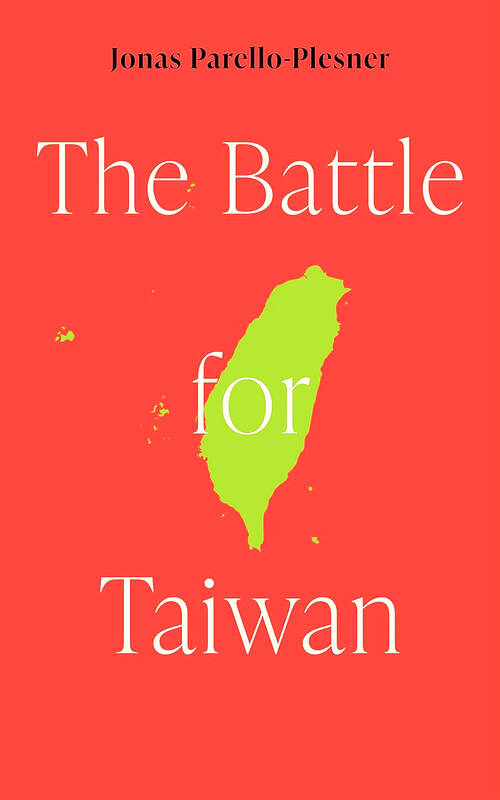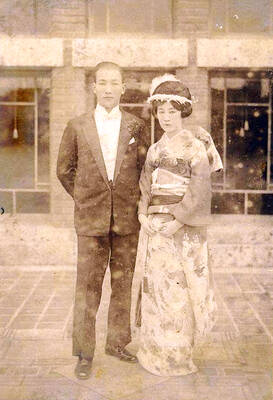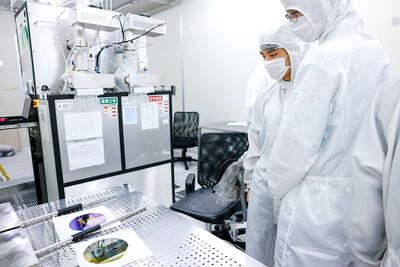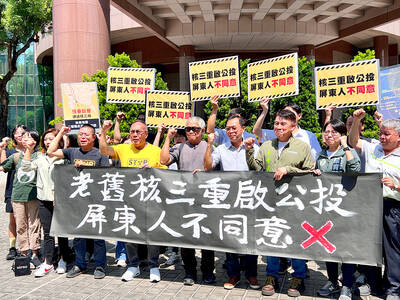In late February, Jonas Parello-Plesner spoke at the Czech Hub in Taipei, hosted by the Taiwan office of the European Values Center, a Prague-based think tank. At the Taipei launch of his book The Battle for Taiwan, Parello-Plesner — head of foreign policy at the Danish Embassy in Washington from 2013 to 2017 — noted that the English edition, which was released in February last year, had tried to anticipate developments in Taiwanese and global politics.
In the former case, he had correctly assumed that William Lai (賴清德) would win Taiwan’s 2024 presidential election. In the latter, Parello-Plesner admits that he — and many other observers — were wrongfooted by the speed and extremity of Washington’s rupture with Europe under Trump 2.0.
“I started foreshadowing a little bit, but did not start a deeper analysis on what a fundamental change [it would be] from [US president Joe] Biden to Trump,” said Parello-Plesner, who is executive director of the Copenhagen-based Alliance of Democracies Foundation. “It really is a kind of existential moment for Europe right now. Some of it we can be in shock, but some … we should also have come a little bit more prepared.”

Naturally, Trump’s ambitions for Greenland were discussed at the event, as was his attitude towards Taiwan, which the US president had recently accused of pilfering American chip know-how. Given Trump’s unpredictability, Taiwan should be ready for the worst-case scenario, Parello-Plesner warned.
Unfortunately, in this short book, which focuses on Taiwan’s importance to Europe and by extension the world, the naivety that Parello-Plesner lamented during the EVC event remains evident. On the one hand, this is commendable: It would have been disingenuous to strip the English edition of analysis that proved, in hindsight, misguided.
Yet, one is frequently struck by just how awry some of the projected scenarios are. Many hinge on an assumed second term for former president Biden, a now irrelevant scenario. An example is Parello-Plesner’s view that Biden’s commitment to Taiwan’s defense puts a potential cross-strait conflagration “in a different league from the Ukraine war, where the US only supports from the sidelines with military equipment.”
True, Parello-Plesner’s reference to weaker support for Kyiv anticipated the dismaying policy reverse of Trump’s second term, and the author raises the possibility of something similar with Taiwan. While noting that high-profile Republicans such as Mike Pompeo, who was US secretary of state during Trump’s first term, advocate officially recognizing Taiwan, Parello-Plesner calls Trump “more pragmatic.”
‘LITTLE’ MARCO’S REVERSAL
Revelations from Trump’s first presidency, “show that he was ready to ‘sell’ Taiwan to China” for a better trade deal, writes Parello-Plesner. “If Trump returns, it could be fateful for Taiwan,” he adds, calling this “one extreme.”
But his “other extreme” is a declaration of support for an independent Taiwan without the US having “first secured its military superiority to China.”
To assess the likelihood of this, Parello-Plesner advises monitoring US foreign policy development and Republican Party decision-making in particular. Of course, this assumed Congress and GOP bigwigs — let alone rank and file — would have some say.
While few could have foreseen Trump’s circumvention of the former institution, the idea of any legitimate internal challenge to MAGA diktats was long ago exposed as wishful thinking. How can anyone be expected to challenge Trump, when US Secretary of State Marco Rubio, who once called Trump a “con artist” and “the most vulgar person” scurried eagerly into the top foreign policy role?
A one-time Russia hawk, who branded Russian President Vladimir Putin a “gangster and thug,” “a tyrant” and a “war criminal,” Rubio has performed a spectacular about turn under Trump, praising his taskmaster’s ceasefire push, sitting by supinely if uncomfortably as Trump and Vice President JD Vance double-teamed Ukrainian President Volodymyr Zelenskyy at an infamous Oval Office meeting in February, and blaming Zelenskyy for “wasting our time.”
WAR CRIMINALS, INC.
Regarding allegations of war criminality, another problematic area of analysis is Parello-Plesner’s observation that China’s President Xi Jinping (習近平) visited Putin in April 2023 “even though Russia’s leader was simultaneously being indicted for war crimes at the International Criminal Court.”
While the ICC rejected an investigation into genocide claims against Beijing for its mass incarceration of and abuses against Uighurs in Xinjiang, the UN has referred to “serious human rights violations.” Just three months before Xi’s Moscow visit, Taiwan’s legislature passed a resolution recognizing China’s actions as crimes against humanity and genocide.
The idea that Xi might care about the ICC ruling against Putin is laughable. Where Parello-Plesner does well is in his treatment of Taiwan’s trade and economic importance. His remarks on the chip industry as “unambiguously security policy” are on point. Although the announcement of a further US$100 billion investment in its Arizona plant by Taiwan Semiconductor Manufacturing Corporation (TSMC) was a year away at the book’s publication time, production was already beginning at the original fab.
Based on this, Parello-Plesner feared that “holes will appear in Taiwan’s chip shield” and “this shift in production could make a future administration much less willing to defend Taiwan militarily.”
While the author’s conversations with industry insiders make him optimistic that Taiwan will retain its “holy grail” of the most advanced chips, he worries about the end of Moore’s Law. At such a “natural point,” new, unforeseen innovations may displace chips.
MISTAKES, MISSTEPS AND MUDDLEHEADEDNESS
Unfortunately, the text contains many basic errors, which might not disturb dilettantes but will prove wince-worthy for old Taiwan hands. Given the European target audience, the claim in chapter two that “Spain and the Netherlands … held colonial settlements on southern and northern Taiwan respectively throughout the seventeenth century” is rather embarrassing.
Elsewhere, Parello-Plesner calls the Chinese Nationalist Party (KMT) and Republic of China (ROC) flags “quite identical with white stars,” refers to Hualien as “a small town” and Taipei’s Liberty Square as “Freedom Square.” He also mentions a meeting at the former residence of KMT general Sun Li-jen (孫立人) in Taipei, which, he writes, was where the war hero was held “under house arrest” for decades. In fact, Sun’s incarceration was at another Japanese-era residence in Taichung.
There are misleading explanations, such as the notion that “the one-China policy” — just whose policy is not clear, but presumably some generic European, American or “Western” formulation — is “referred to as the One-China principle” by Beijing and that “the Taiwanese took the initiative” when Taiwan was ceded to Japan in 1895 to establish the Republic of Formosa.
Likewise, the idea that a lack of civil society resilience was “a lesson [for Taiwan and the US] of Afghanistan’s collapse in 2021” is so muddled that it is surprising such a seasoned diplomat would draw such comparisons.
Then, there are some real oddities, including the bizarre claim that the author attributes to a former admiral writing for a KMT think-tank that former president Tsai Ing-wen (蔡英文) endangered the general population by placing “landmines everywhere — even in the cities” around Taiwan.
The author’s call for solidarity with Taiwan is laudable, as is his view that Taiwan’s liberty and democracy is vital to “all of us freedom-minded people” in the fight against a global creep toward populism and authoritarianism. It’s just a shame Parello-Plesner didn’t tighten up the text a bit more to lend this book a bit more heft.

Sept. 1 to Sept. 7 In 1899, Kozaburo Hirai became the first documented Japanese to wed a Taiwanese under colonial rule. The soldier was partly motivated by the government’s policy of assimilating the Taiwanese population through intermarriage. While his friends and family disapproved and even mocked him, the marriage endured. By 1930, when his story appeared in Tales of Virtuous Deeds in Taiwan, Hirai had settled in his wife’s rural Changhua hometown, farming the land and integrating into local society. Similarly, Aiko Fujii, who married into the prominent Wufeng Lin Family (霧峰林家) in 1927, quickly learned Hoklo (commonly known as Taiwanese) and

The low voter turnout for the referendum on Aug. 23 shows that many Taiwanese are apathetic about nuclear energy, but there are long-term energy stakes involved that the public needs to grasp Taiwan faces an energy trilemma: soaring AI-driven demand, pressure to cut carbon and reliance on fragile fuel imports. But the nuclear referendum on Aug. 23 showed how little this registered with voters, many of whom neither see the long game nor grasp the stakes. Volunteer referendum worker Vivian Chen (陳薇安) put it bluntly: “I’ve seen many people asking what they’re voting for when they arrive to vote. They cast their vote without even doing any research.” Imagine Taiwanese voters invited to a poker table. The bet looked simple — yes or no — yet most never showed. More than two-thirds of those

In the run-up to the referendum on re-opening Pingtung County’s Ma-anshan Nuclear Power Plant last month, the media inundated us with explainers. A favorite factoid of the international media, endlessly recycled, was that Taiwan has no energy reserves for a blockade, thus necessitating re-opening the nuclear plants. As presented by the Chinese-language CommonWealth Magazine, it runs: “According to the US Department of Commerce International Trade Administration, 97.73 percent of Taiwan’s energy is imported, and estimates are that Taiwan has only 11 days of reserves available in the event of a blockade.” This factoid is not an outright lie — that

Former Chinese Nationalist Party (KMT) chairwoman Hung Hsiu-chu’s (洪秀柱) attendance at the Chinese Communist Party’s (CPP) “Chinese People’s War of Resistance Against Japanese Aggression and the World Anti-Fascist War” parade in Beijing is infuriating, embarrassing and insulting to nearly everyone in Taiwan, and Taiwan’s friends and allies. She is also ripping off bandages and pouring salt into old wounds. In the process she managed to tie both the KMT and the Democratic Progressive Party (DPP) into uncomfortable knots. The KMT continues to honor their heroic fighters, who defended China against the invading Japanese Empire, which inflicted unimaginable horrors on the